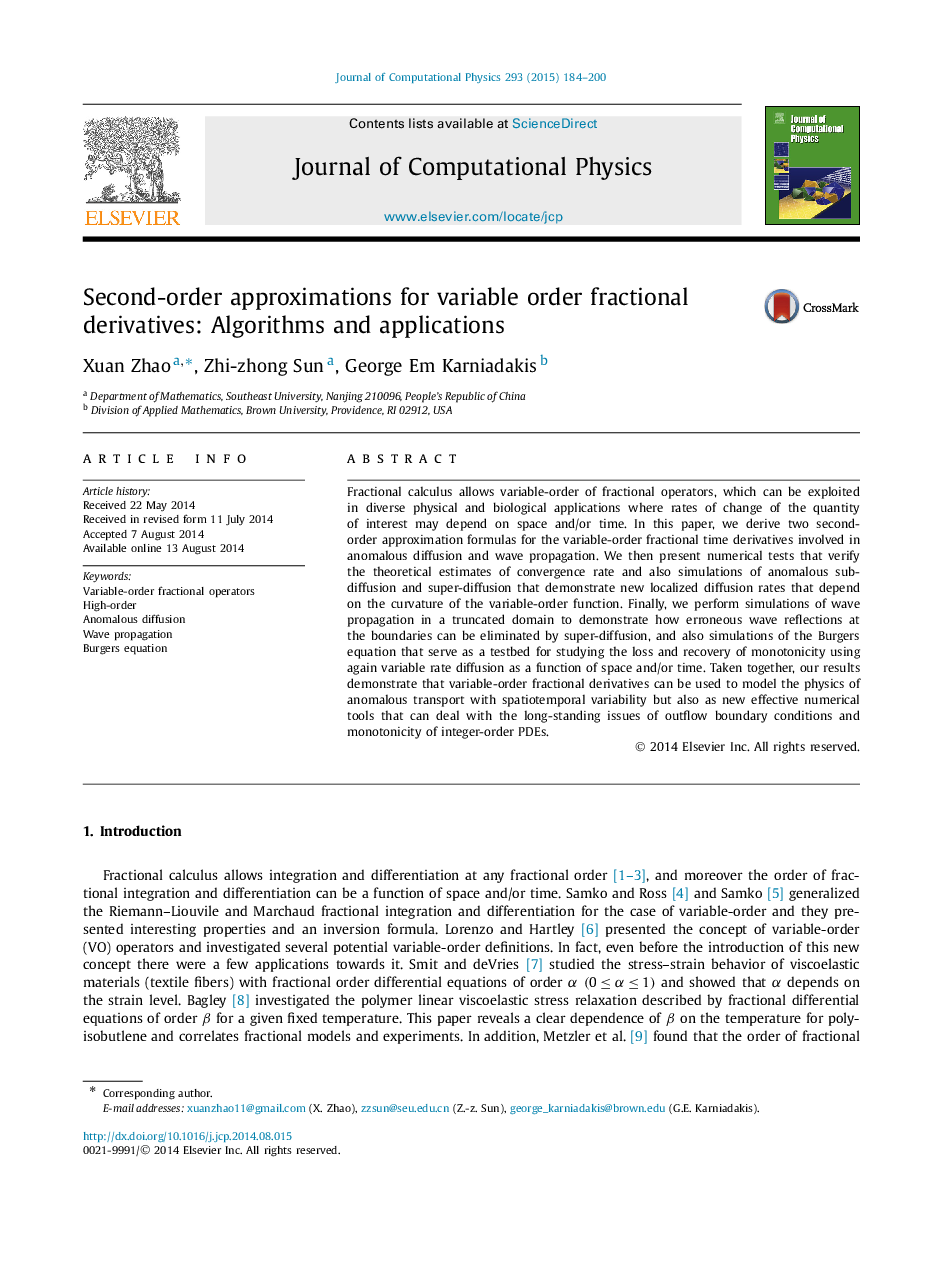| Article ID | Journal | Published Year | Pages | File Type |
|---|---|---|---|---|
| 519741 | Journal of Computational Physics | 2015 | 17 Pages |
Fractional calculus allows variable-order of fractional operators, which can be exploited in diverse physical and biological applications where rates of change of the quantity of interest may depend on space and/or time. In this paper, we derive two second-order approximation formulas for the variable-order fractional time derivatives involved in anomalous diffusion and wave propagation. We then present numerical tests that verify the theoretical estimates of convergence rate and also simulations of anomalous sub-diffusion and super-diffusion that demonstrate new localized diffusion rates that depend on the curvature of the variable-order function. Finally, we perform simulations of wave propagation in a truncated domain to demonstrate how erroneous wave reflections at the boundaries can be eliminated by super-diffusion, and also simulations of the Burgers equation that serve as a testbed for studying the loss and recovery of monotonicity using again variable rate diffusion as a function of space and/or time. Taken together, our results demonstrate that variable-order fractional derivatives can be used to model the physics of anomalous transport with spatiotemporal variability but also as new effective numerical tools that can deal with the long-standing issues of outflow boundary conditions and monotonicity of integer-order PDEs.
